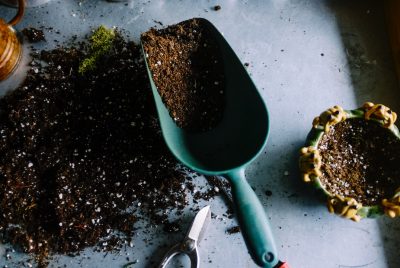Starter Fertilizer for Grass: Application Guide
Note: Lawn seeding and feeding is best done in Fall!
Have you ever wondered how some lawns looked perfectly green and uniform without a spot of blemish? What do lawn owners do to maintain their luscious grass? One thing that caught my attention is starter fertilizer for grass. They help to give your grass the kickstart it needs to thrive and shine. Let’s discuss the ins and outs of starter fertilizers, from what they are to how and when to apply them.
Understanding Starter Fertilizers
Starter fertilizers are specially formulated blends designed to provide a robust nutritional foundation for young grass. These fertilizers play a pivotal role in nurturing young grass, offering a balanced mix of nitrogen, phosphorus, and potassium. These fertilizers equip your grass with the vitality needed to establish strong roots and promote vigorous growth. The primary objective of starter fertilizers is to create an optimal environment for grass seeds to germinate and establish robust root systems. The nutrient composition is carefully calibrated to meet the specific needs of developing grass, promoting healthy growth and resilience against environmental stressors.

Key Components of Starter Fertilizers:
- Nitrogen (N): Vital for leaf and stem development, nitrogen is a cornerstone nutrient in starter fertilizers. It encourages lush, green foliage, giving your lawn a vibrant and healthy appearance.
- Phosphorus (P): Critical for root development, phosphorus in starter fertilizers enhances the establishment of a strong and extensive root system. This is particularly crucial during the early stages of grass growth.
- Potassium (K): Essential for overall plant health, potassium aids in disease resistance and stress tolerance. Including potassium in starter fertilizers ensures a well-rounded approach to supporting your grass’s well-being.
How to Apply Starter Fertilizer: Nurturing Your Green Oasis
Applying starter fertilizer may seem like a straightforward task, but precision is key. This includes the seeding process or immediately after germination. Begin by evenly spreading the fertilizer using a broadcast spreader for larger areas or a handheld spreader for smaller spaces. Water the lawn immediately after application to allow the nutrients to penetrate the soil. Timing is everything when it comes to fertilizing your lawn, starter fertilizers are most beneficial when applied during the initial phases of grass growth. Ideally, apply the fertilizer in the spring or fall when the soil temperature is conducive to seed germination. This strategic timing maximizes the benefits, giving your grass the nutritional boost it craves during critical growth phases.
Why Fertilize Your Grass
- Promotes Healthy Germination: The nutrient-rich composition of starter fertilizers accelerates the germination process, allowing grass seeds to sprout quickly and uniformly.
- Enhances Root Development: The balanced blend of nutrients, especially phosphorus, supports the growth of robust root systems. This is crucial for the long-term health and stability of your lawn.
- Boosts Early Growth: Young grass faces various challenges in its early stages. Starter fertilizers provide the necessary nutrients to ensure rapid and healthy growth, setting the tone for a lush lawn.
- Increases Stress Resistance: The presence of potassium in starter fertilizers contributes to the grass’s ability to withstand stress factors such as extreme weather conditions and potential diseases.
Suggestions for Optimal Results
- Soil Testing: Before embarking on your fertilizing journey, conduct a soil test to identify any nutrient deficiencies. Tailoring your fertilizer choice to your soil’s needs ensures a customized approach to grass care.
- Proper Watering: Adequate watering is the yin to the fertilizer’s yang. Ensure your lawn receives sufficient water, especially after fertilizing, to facilitate nutrient absorption and promote even distribution.
- Choose the Right Fertilizer: Different grass types have unique nutrient requirements. Select a starter fertilizer that aligns with the specific needs of your grass variety for optimal results.
- Avoid Overapplication: While the temptation to over-fertilize may be strong, resist it. Too much fertilizer can harm your grass and lead to environmental concerns. Follow recommended application rates diligently.
- Consistent Maintenance: Fertilizing is not a one-time affair. Implement a consistent lawn care routine, including regular fertilization, to sustain the health and beauty of your grass.
Starter fertilizer for grass are a specialized and essential tool in the lawn care arsenal. By understanding their purpose and optimal application, you empower your lawn to thrive from its earliest days, ultimately reaping the rewards of a vibrant and resilient green landscape.
FAQs
- Can I use starter fertilizer on established lawns?
- Starter fertilizers are specifically designed for young grass, and while they won’t harm established lawns, using a regular fertilizer is more appropriate.
- How often should I apply starter fertilizer?
- For optimal results, apply starter fertilizer during the initial seeding or after germination. After that, transition to a regular fertilization schedule based on your grass type.
- Can I mix starter fertilizer with other lawn products?
- It’s best to avoid mixing starter fertilizer with other products to prevent potential nutrient imbalances. Follow the recommended application rates for each product.
- Is organic starter fertilizer better than synthetic ones?
- Both organic and synthetic starter fertilizers have their merits. The choice depends on your preferences, lawn needs, and environmental considerations.
- Can I apply starter fertilizer in the summer?
- While not ideal, you can apply starter fertilizer in the summer. However, it’s crucial to water the lawn adequately to prevent stress on the grass during hot weather.





